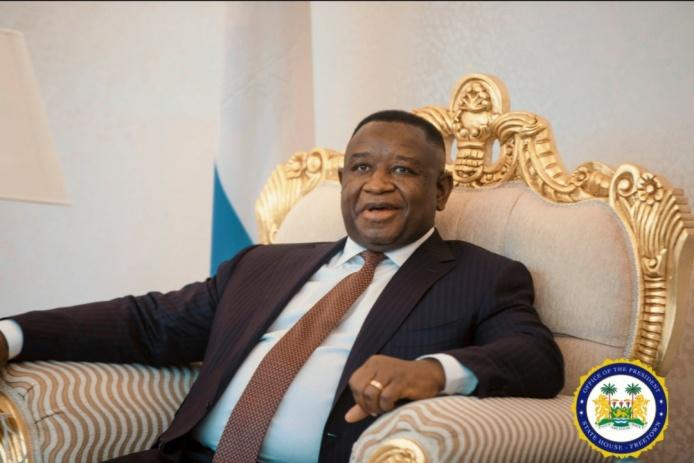Africa-Press – Sierra-Leone. It can be recalled that President Bio in April 2018 came into power on the promise of rebuilding the Sierra Leone economy and making life better for the ordinary average citizen through good State administrative and financial management.
Well-intentioned as he was, global events far beyond his control have hampered drastically the quest of his promise to the nation by his New Direction Government.
Starting with falling exports and increased imports bills that forced his Government to take on additional borrowing, the Leone has depreciated considerably in its value against the pound, dollar and euro since 2018.
The continual increase in the international price of fuel on which the entire economy depends to run has also caused the Government and its people considerable financial strain in terms of its effect on food prices, transportation, rents and all other market prices which have gone up frighteningly very recently.
The World Bank which works closely with development partners to support Sierra Leone in fighting poverty, promoting economic development and improving living standards in a report published in October 2021 stated that Sierra Leone’s economy contracted by 2% as the COVID-19 pandemic led to slowdown in all sectors following global supply chain disruptions and lockdown measures.
GDP per capita fell by 4% in 2020, reversing some of the recent gains in poverty reduction. Real GDP is expected to rebound by 4.2% in 2021, reflecting the easing of COVID-related restrictions as well as the implementation of the Government’s fiscal response to the pandemic.
Headline inflation fell to 8.9% in March 2021, before rising sharply to 10.2% by end June, reflecting an increase in food and fuel prices. Food inflation reached 17.1% in June 2021, well above its pre-COVID-19 level of 9.9%.
The current account deficit was expected to improve by 1 percentage point to 16.4% of GDP in 2021, reflecting higher export receipts from the mining sector.
In 2021, total public expenditure reached 12.3% of GDP while total revenue collection totaled 6.9% of GDP. The overall budget deficit is projected to decline to 3.8% of GDP in 2021. Public debt was estimated to decline to 72.9% of GDP in 2021, although the risk of external and overall debt distress was assessed as high in June 2021.
In this frame, Sierra Leone’s medium-term outlook is subject to downside risks. The main domestic macroeconomic risks are continued high public debt and domestic payment of arrears, slower than expected revenues, and rapid growth in monetary aggregates, including the associated inflationary risks and financial sector weaknesses.
This picture clearly shows that Sierra Leone still faces severely the development challenges of the last decade stemming largely from the Ebola pandemic in 2014 and 2015 which like COVID 19 threw overboard the then Government’s development plans and aspirations to lay the foundations for attaining middle-income status by 2035.
As it is, the country still carries its post-conflict attributes of high youth unemployment, corruption, and weak governance. The country continues to face the daunting challenge of enhancing transparency in managing its natural resources and creating fiscal space for development. Problems of poor infrastructure and widespread rural and urban impoverishment persist despite remarkable strides and reforms.
The million dollar question on the lips of many Sierra Leoneans is, how would this gloomy economic atmosphere affect President Bio’s reelection bid in 2023 if not brought under control?
For More News And Analysis About Sierra-Leone Follow Africa-Press






